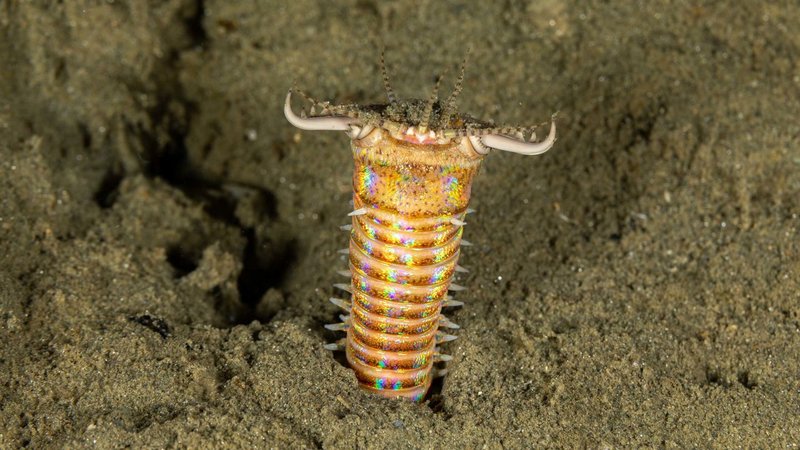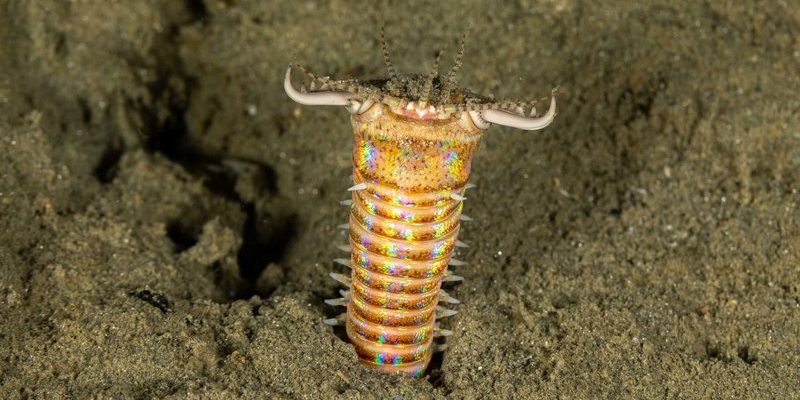
Now, the sizes of these creatures are quite unbelievable. Some can grow to lengths that rival a small child, while others are less impressive but equally intriguing. So, let’s dive into the depths of the ocean and explore the documented sizes of Giant Bobbit Worms found worldwide. Trust me, whether you’re a marine biology enthusiast or just curious about the wonders of the sea, this is going to be a ride worth taking.
What Is a Giant Bobbit Worm?
The Giant Bobbit Worm, scientifically known as *Eunice aphroditois*, can be a bit of a mystery. This worm can reach lengths of up to 10 feet (3 meters) or more! Imagine that lurking beneath the sand, camouflaged beautifully with bright colors and intricate patterns. The body is segmented, and it features sharp, jaw-like appendages that can strike swiftly.
These worms are typically found in tropical and subtropical waters, often buried in sandy or muddy substrates. They construct elaborate burrows, which serve as their ambush points. When unsuspecting prey swims or crawls by, the Bobbit worm strikes with incredible speed. Honestly, it’s a bit like watching a predatory ninja at work!
Size Variations Across Regions
You might be wondering if Giant Bobbit Worms are the same size everywhere. While they can grow impressively large, their sizes do vary by region. In places like the Indo-Pacific, they’ve been documented at sizes exceeding 10 feet. On the other hand, those found in temperate waters, such as the coasts of the Caribbean, might not reach such lengths but can still impress with a solid 3 to 6 feet.
In essence, the environment plays a huge role in their growth potential. Factors like food availability, water temperature, and habitat type all contribute. It’s sort of like how some plants grow taller in the tropics compared to those in cooler climates. So, the next time you hear about these creatures, remember that location matters!
Record-Breaking Sizes
Now, let’s talk about some record-breaking Giant Bobbit Worms. The longest ever recorded was spotted in the Coral Sea near Australia. It measured an astonishing 12 feet (around 3.6 meters) long! Can you picture that? It’s longer than a small car! This specific worm was found during a marine expedition, highlighting just how little we know about what resides in our oceans.
Researchers often rely on communities and divers to report sightings and capture footage of these astonishing creatures. It’s thrilling to think that each dive into the ocean could reveal a monster lurking beneath the surface. Honestly, it adds to the magic of marine exploration, where every dive holds the promise of discovery.
Measuring the Giant Bobbit Worm
So, how do scientists measure these fascinating creatures? Typically, divers or researchers will gently extract the worm from its habitat. They take careful measurements, making sure to note the length and the diameter of the body. It’s important to do this without harming the worm because the health of marine ecosystems relies on creatures like the Bobbit worm.
Measuring usually involves using flexible measuring tape or similar tools, ensuring accuracy. The lengths can be surprising as many of these worms are elusive, often staying concealed in their burrows. Imagine trying to measure a slinky that keeps trying to wiggle away—that’s what it’s like capturing these mesmerizing creatures!
Why Size Matters in the Ocean
Understanding the size of the Giant Bobbit Worm can provide us with several insights into marine ecology. Bigger sizes often imply more considerable predatory power, which means these worms play a critical role in their environment. They help control populations of smaller fish and invertebrates, maintaining balance within their ecosystems.
But size isn’t just about power; it’s also about survival. Larger size means fewer natural predators, which increases the worm’s chances of living longer and reproducing. Unfortunately, human activities and habitat destruction are threatening their populations, and that’s where size does matter. If we lose these giant creatures, the ripple effect can impact the entire marine food chain.
Conservation Status and Challenges
Currently, the conservation status of the Giant Bobbit Worm isn’t explicitly defined by major organizations. However, there’s growing concern about the impact of climate change, habitat destruction, and pollution on their populations. As habitats are altered, the worms may not only lose their homes but also face competition from other species.
Moreover, these worms are not particularly well-studied, which complicates conservation efforts. Without enough data, it’s challenging to implement effective measures to protect their habitats. Awareness and education can play a big part in conserving the Giant Bobbit Worm and its ecosystem. Honestly, the more we know, the better we can protect these incredible creatures.
The Fascination with Giant Bobbit Worms
The Giant Bobbit Worm continues to fascinate marine enthusiasts and scientists alike. They captivate our imaginations not just for their size but also for their unique behaviors and striking appearances. Knowing that these creatures roam our oceans reminds us of the countless wonders that lie beneath the surface, waiting to be discovered.
If you’ve never seen a Bobbit worm, you might find yourself watching videos or documentaries about them. The thrill of their ambush tactics and striking colors can spark a genuine interest in marine biology. Honestly, these worms are a small piece of the ocean’s puzzle, and every piece holds a story worth telling.
As we marvel at these giant wonders, let’s remember to appreciate their role in our ecosystems. By learning more about the Giant Bobbit Worms and advocating for their conservation, we can contribute to a healthier ocean. So, the next time someone mentions Bobbit worms, you’ll have plenty to share!
In conclusion, the world of **Giant Bobbit Worms** is as vast and mysterious as the oceans they inhabit. From their staggering sizes to their crucial roles in marine ecosystems, there’s so much to learn and appreciate about these creatures. Let’s keep exploring and supporting marine life, one fascinating worm at a time!

